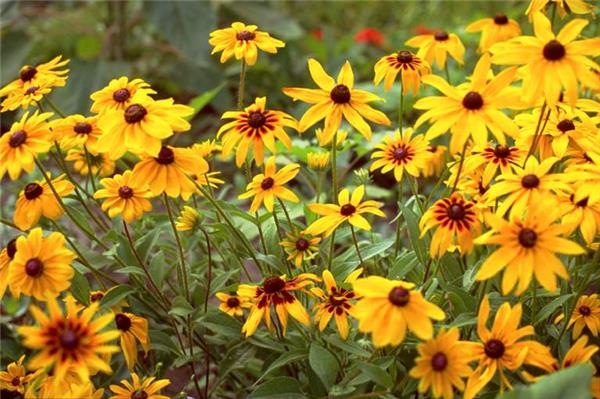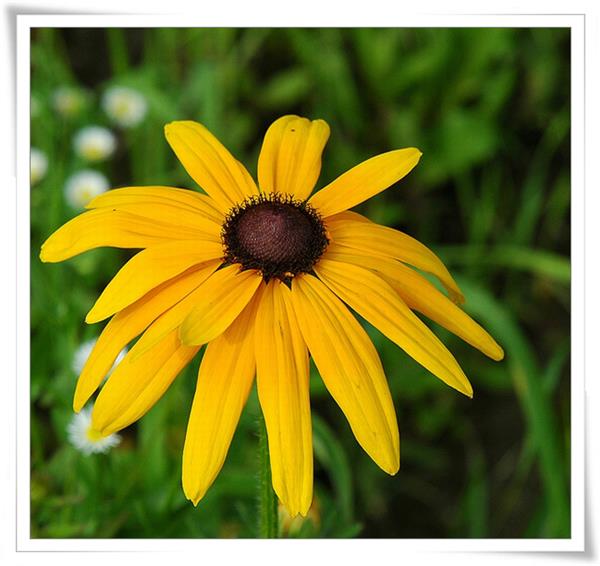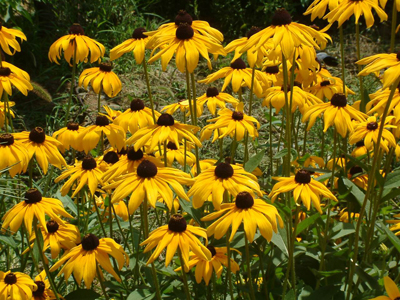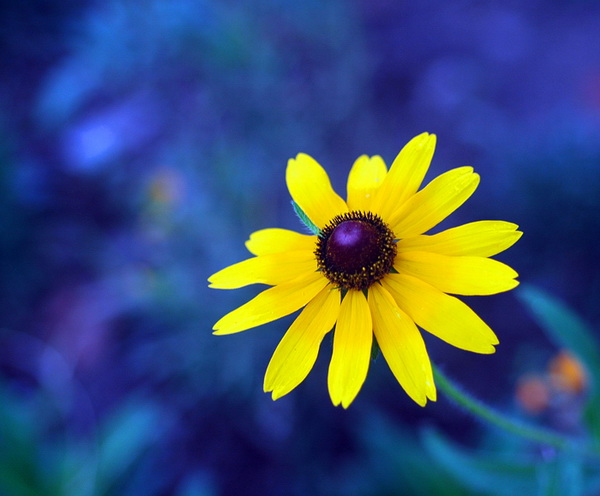What is a black-hearted chrysanthemum?
We all know chrysanthemum, but it is also divided into many kinds, such as black chrysanthemum, small daisy, African chrysanthemum, multi-headed chrysanthemum, cliff chrysanthemum and so on. And today we are going to talk about this black chrysanthemum. Do you know why it is called black heart chrysanthemum? This black heart is not that black heart, in fact, it is only because its petals are black in the middle. So what is the black-hearted chrysanthemum language and planting techniques? Let's take a look next.
Black-hearted chrysanthemum is a 2012 herb under Compositae, which gets its name because of its black flower heart. Black chrysanthemum has very gorgeous flowers and is favored all over the world. It is an elegant and beautiful ornamental flower. The beauty of black chrysanthemum is intoxicating. Do you know what kind of flower language Da has? How to cultivate black chrysanthemum?

Planting of Chrysanthemum morifolium
Planting black chrysanthemum: reproduction
Black-hearted chrysanthemum is often propagated by sowing, cutting and dividing plants. Sowing and ramet can be carried out in spring and autumn. March in spring and September in autumn are the best sowing time. Ramet is generally aimed at perennial old plants. Usually sowing in March in spring, it can blossom from June to July, sow in September in autumn, plant in pot in November, and blossom in May and June of the following year. In order to ensure the strong growth and colorful flowers of Chrysanthemum morifolium, it should be transplanted when 4-5 leaves grow after sowing and can survive the winter in the open field. If the cuttings are cut, the new buds sprouting from the roots are commonly used as cuttings, which can be carried out in spring and autumn. It will be carried out when sprouting and sprouting to about 15cm in spring and after rhizosphere sprouting after anthesis in autumn.

Planting of black chrysanthemum: raising seedlings
Black-hearted chrysanthemum often uses ramet and tissue to culture seedlings in production. Ramets are usually carried out once every 3 years, and the old plants promoted by greenhouse cultivation are dug up and cut from April to May, each plant with 5 leaves, which can be planted separately. On the other hand, tissue culture is a method of using biotechnology to select and rapidly breed seedlings. General growers do not have the conditions for tissue propagation, so they can directly go to the specialty store to buy tissue culture seedlings for planting. However, since these tissue culture seedlings are generally relatively small, they need to be planted in the greenhouse after developing large seedlings.

Black Chrysanthemum cultivation: management
Black heart chrysanthemum likes warm and sunny growth environment, and there should be sufficient light during the growth period, and its optimum temperature for germination is 21 ℃-30 ℃. It can be sowed in spring, summer and autumn, and its suitable growth temperature is 10 ℃-30 ℃, no more than 26 ℃ in daytime, and 10 ℃ 15 ℃ at night. Only at the right temperature can the black chrysanthemum continue to grow and blossom without dormancy. In winter, due to low temperature and little sunshine, in order to prevent black chrysanthemum from affecting its growth due to lack of light and low temperature, it should be maintained indoors in the sunny place, and pay attention to heat preservation. And summer light is strong, at this time should cool through shade, lest black chrysanthemum cause dormancy due to high temperature.
Black chrysanthemum likes sunny, well-ventilated growth environment, cold and drought tolerance, strong adaptability, no special requirements for soil, and relatively extensive management. It is often planted on the ground and should be cultivated in a loose and fertile sandy loam that is drained and breathable. Black chrysanthemum does not have strict requirements for fertilizer and water. when it grows well, it only needs to give nitrogen, phosphorus and potassium fertilizer to top dressing, and watering needs to master the principle of seeing dry and wet, so that the flowers are more beautiful. For black chrysanthemum for cut flowers, coring can be carried out appropriately to prolong its florescence. For some perennial plants, it is necessary to force the split, so as not to affect the growth and flowering.

When the leaves of Chrysanthemum morifolium are too dense, the old and diseased leaves of the outer layer of the plant should be removed in time, so as to improve its lighting and ventilation conditions, so as to reduce the occurrence of diseases and insect pests and the consumption of nutrients. At the same time, it is more conducive to the development and growth of new leaves and flower buds, and increase its yield. The flowering period of black-hearted chrysanthemum is from May to September. After flowering, some rotten branches and leaves should be cut off in time to promote its regeneration and flowering. Of course, in the process of cultivation, we should also pay attention to drainage and ventilation, so as not to cause root rot of black chrysanthemum.
Basic introduction of Chrysanthemum morifolium
Black chrysanthemum, Compositae, Chrysanthemum, herbs born in 2012. The heart of the flower is raised, purple-brown, and the peripheral petaloid florets are golden yellow. Florescence from early summer to frost. The cultivated varieties have tung brown, chestnut brown, double and semidouble types. The flower heart has olive green "Irish eyes" and tetraploid inflorescences up to 15 cm in diameter. In addition to yellow, there are seasonal red flowers and two colors. Native to the eastern United States. Cold tolerance is not strong, central China can still be sown in autumn, open field overwintering. It can also be used as a cut flower.

Morphological features:
Chrysanthemum, of the family Compositae, born in 2012, with a height of 60-100cm, a head of 8-9cm, double flowers, yellow ligulate flowers, sometimes brown yellow bands, and dark brown tubular flowers. Stem stout, pubescent, slightly branched, winged. Alternate leaves rough, long elliptic to narrowly lanceolate, long 10~15cm, leaf base extending to stem winglike, pinnatifid, 5-7-lobed, cauline leaves 3-5-lobed, margin sparsely serrate. Inflorescences capitate, ca. 2.5~5cm in diameter, corymbose, shortly pedicellate; ligulate flowers neutral, long 1.5~2cm, yellow, brownish purple or with bicolor stripes; tubular flowers brown to purple, densely spherical; sown in spring and autumn, florescence from August to October. From summer to autumn, cold and drought tolerance, extensive management, cluster planting, highway greening, flower bed flower border, grass edge planting. It can also be used as cut flowers, overwintering in the open field, and can be self-sown and reproduce. The whole plant is hairy, near the root leaves, the upper leaves alternate, the leaves are spatulate and broadly lanceolate, the leaf margin is coarsely dentate. Inflorescence head.
Double and semidouble. The flower heart has olive green "Irish eyes" and tetraploid inflorescences up to 15 cm in diameter. In addition to yellow, there are seasonal red flowers and two colors. Native to the eastern United States. Cold tolerance is not strong, central China can still be sown in autumn, open field overwintering. It can also be used as a cut flower.

Morphological features:
Chrysanthemum, of the family Compositae, born in 2012, with a height of 60-100cm, a head of 8-9cm, double flowers, yellow ligulate flowers, sometimes brown yellow bands, and dark brown tubular flowers. Stem stout, pubescent, slightly branched, winged. Alternate leaves rough, long elliptic to narrowly lanceolate, long 10~15cm, leaf base extending to stem winglike, pinnatifid, 5-7-lobed, cauline leaves 3-5-lobed, margin sparsely serrate. Inflorescences capitate, ca. 2.5~5cm in diameter, corymbose, shortly pedicellate; ligulate flowers neutral, long 1.5~2cm, yellow, brownish purple or with bicolor stripes; tubular flowers brown to purple, densely spherical; sown in spring and autumn, florescence from August to October. From summer to autumn, cold and drought tolerance, extensive management, cluster planting, highway greening, flower bed flower border, grass edge planting. It can also be used as cut flowers, overwintering in the open field, and can be self-sown and reproduce. The whole plant is hairy, near the root leaves, the upper leaves alternate, the leaves are spatulate and broadly lanceolate, the leaf margin is coarsely dentate. Inflorescence head.
Related
- Wuhan Hospital Iron Tree Blooming Result Was Instantly Frightened by the Gardener Master
- Which variety of camellia is the most fragrant and best? Which one do you like best?
- What is the small blue coat, the breeding methods and matters needing attention of the succulent plant
- Dormancy time and maintenance management of succulent plants during dormancy
- Minas succulent how to raise, Minas succulent plant pictures
- What are the varieties of winter succulent plants
- How to raise succulent plants in twelve rolls? let's take a look at some experience of breeding twelve rolls.
- Attention should be paid to water control for succulent plants during dormant period (winter and summer)
- Watering experience of twelve rolls of succulent plants
- Techniques for fertilizing succulent plants. An article will let you know how to fertilize succulent plants.



